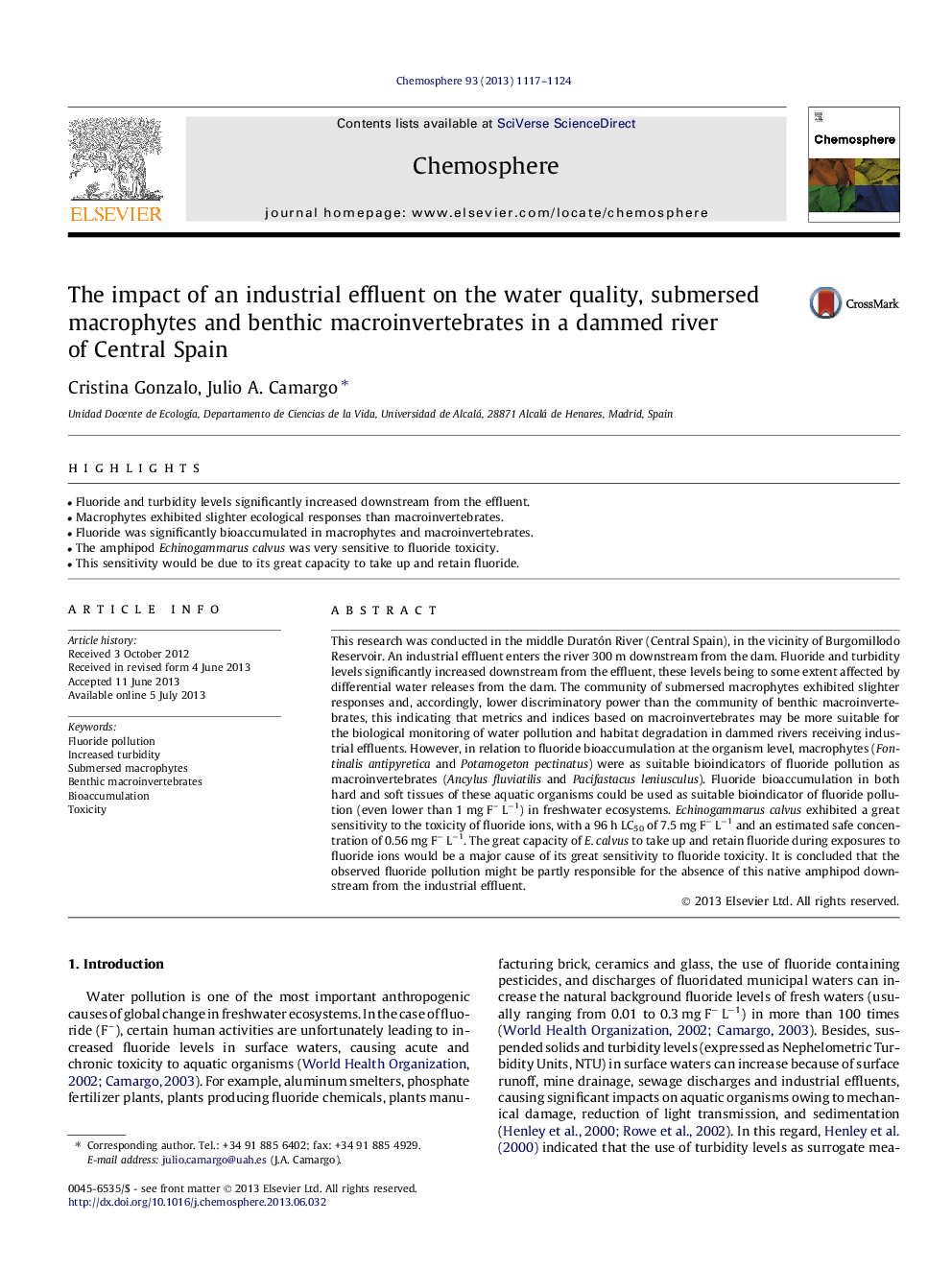| Article ID | Journal | Published Year | Pages | File Type |
|---|---|---|---|---|
| 6310338 | Chemosphere | 2013 | 8 Pages |
â¢Fluoride and turbidity levels significantly increased downstream from the effluent.â¢Macrophytes exhibited slighter ecological responses than macroinvertebrates.â¢Fluoride was significantly bioaccumulated in macrophytes and macroinvertebrates.â¢The amphipod Echinogammarus calvus was very sensitive to fluoride toxicity.â¢This sensitivity would be due to its great capacity to take up and retain fluoride.
This research was conducted in the middle Duratón River (Central Spain), in the vicinity of Burgomillodo Reservoir. An industrial effluent enters the river 300 m downstream from the dam. Fluoride and turbidity levels significantly increased downstream from the effluent, these levels being to some extent affected by differential water releases from the dam. The community of submersed macrophytes exhibited slighter responses and, accordingly, lower discriminatory power than the community of benthic macroinvertebrates, this indicating that metrics and indices based on macroinvertebrates may be more suitable for the biological monitoring of water pollution and habitat degradation in dammed rivers receiving industrial effluents. However, in relation to fluoride bioaccumulation at the organism level, macrophytes (Fontinalis antipyretica and Potamogeton pectinatus) were as suitable bioindicators of fluoride pollution as macroinvertebrates (Ancylus fluviatilis and Pacifastacus leniusculus). Fluoride bioaccumulation in both hard and soft tissues of these aquatic organisms could be used as suitable bioindicator of fluoride pollution (even lower than 1 mg Fâ Lâ1) in freshwater ecosystems. Echinogammarus calvus exhibited a great sensitivity to the toxicity of fluoride ions, with a 96 h LC50 of 7.5 mg Fâ Lâ1 and an estimated safe concentration of 0.56 mg Fâ Lâ1. The great capacity of E. calvus to take up and retain fluoride during exposures to fluoride ions would be a major cause of its great sensitivity to fluoride toxicity. It is concluded that the observed fluoride pollution might be partly responsible for the absence of this native amphipod downstream from the industrial effluent.
